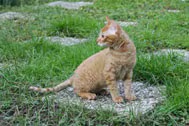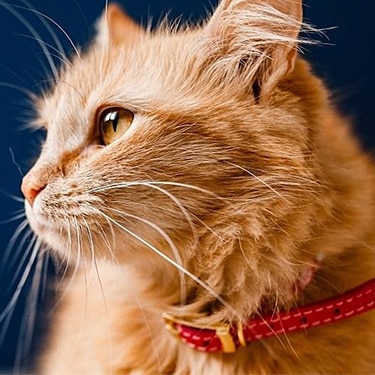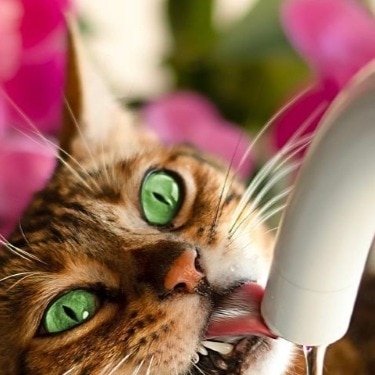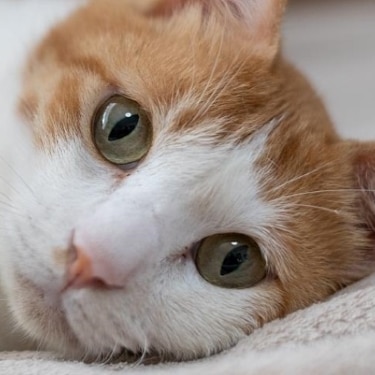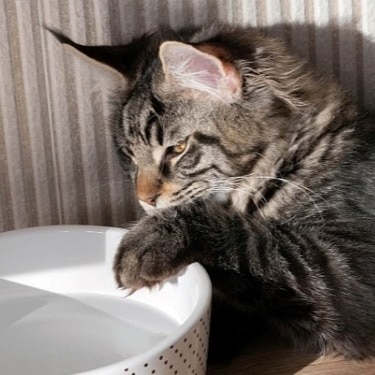Because of the fine boning on the German Rex, she may feel almost dainty, but this cat is athletic and not at all fragile.
The German Rex has a round head with large ears and eyes that look large for the size of the head. She has a strong chin and long, slender legs. The tail is also medium in length, and is well covered with fur.
The coat on the German Rex is unusual as it has no guard hairs, is silky, short and curls naturally. The whiskers also curl.
The German Rex is a breed that becomes involved with her parent. She loves to be right next to her humans and must have some time with them every day. In general, she loves being handled by her parents.
The German Rex is an athletic cat and will maintain her ideal weight if provided with enough space for exercise. Because the coat is close to the skin, you will easily be able to tell if your German Rex is getting too heavy.
A spontaneous genetic mutation in the cat world is not common. In 1950 in Cornwall, England, the first Cornish Rex kitten was born of a barn cat and an unknown sire. The parent took this curly coated cat into her home, named him Kallibunker, and began what became the Cornish Rex breed.
One year later, another wavy-haired female, Laemmchen, was found living on the grounds and in the basement of the Hufeland Hospital in what was then East Germany. Her parent also knew nothing about her background. In the late 1950s, Laemmchen had a litter with two curly coated kittens, even though she had nothing but straight-hair kittens in several earlier litters. This litter became foundation of the German Rex breed.
German Rexes were first shown in 1960, and quickly spread from Germany to France, England and the United States.
For a time, confusion abounded as to the separate nature of the Devon Rex, the Cornish Rex, and the German Rex. After the Cornish and German Rex were interbred, they were found to be genetically compatible. Unlike the Cornish Rex-Devon Rex breeding, which produced only straight-coated kittens, the Cornish rex-German Rex breeding produced curly coated kittens. In some parts of Europe, some Cornish Rex can trace their ancestry back to German Rex foundation cats.
As a result of the genetic similarity between the Cornish Rex and the German Rex, the German Rex is no longer bred as a separate breed in many countries. Today the breed is rare, even in Germany.
Adopt a pet. Change a life.
Are you prepared to adopt a pet? Use these tools to make sure you are ready for the commitment.
Adopt a pet. Change a life.
Are you prepared to adopt a pet? Use these tools to make sure you are ready for the commitment.
















